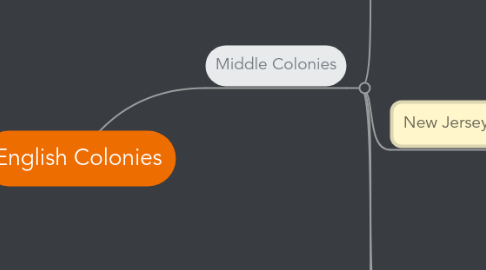
1. Middle Colonies
1.1. New York Colony
1.1.1. New York City is the most populous city in the country.
1.1.2. New York began as the Dutch colony of New Netherland.
1.1.2.1. In 1664, England’s King Charles II granted the right to all the Dutch lands in North America to his brother James. All that James had to do was conquer the territory.
1.1.2.1.1. James sent a few warships to do the job, and the Dutch surrendered immediately. The colony was renamed New York, after James, the Duke of York.
1.1.2.2. One of New Netherland’s major problems was its small Dutch population.
1.1.2.2.1. the colonists came from Sweden, France, and Portugal.
1.1.2.2.2. English Puritans who had settled on Long Island,were often hostile to Dutch rule.
1.1.2.3. New York had become a royal colony in 1685.
1.1.3. The colony was the base for a profitable fur trade between the Dutch and Native Americans.
1.1.3.1. The Dutch also made money trading with merchants in the British colonies.
1.1.3.2. This trade violated Britain’s mercantile laws and angered the government.
1.2. New Jersey Colony
1.2.1. New Jersey was established in 1665, when part of southern New York was split off to form a new colony.
1.2.1.1. New Jersey at first was a proprietary colony
1.2.1.1.1. A colony created by a grant of land from a monarch to an individual or family.
1.2.1.2. 1702, New Jersey received a new charter as a royal colony
1.2.1.2.1. A colony controlled directly by the English king.
1.3. Quakers
1.3.1. Deleware Colony
1.3.2. Pennsylvania Colony
1.3.3. the Quakers were one of a number of new religious groups in England.
1.3.4. The Quakers believed that all people had a direct link, or “inner light,” with God.

